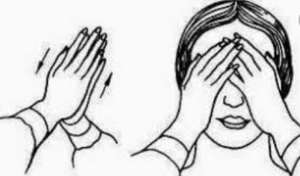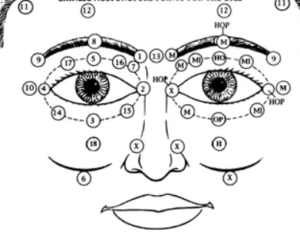What if it were possible to strengthen your eyes to maintain good vision for longer?
The Bates method, invented at the beginning of the 20th century, believes that it is possible to limit the use of glasses by doing exercises that stimulate the mobility of the eye.
A little eye gymnastics is essential!
William Bates: the false and the true
At the beginning of the 20th century, the American ophthalmologist William Bates (1860-1931) noticed that most of his patients with vision problems had fixed eyes.
He hypothesised that it was possible to correct these problems using eye movements and mental relaxation exercises.
The aim is to train the eyes to relieve eye muscle tension and improve vision.
Although Bates' theories about the anatomy of the eye have been proven wrong, some ophthalmologists now recognise that the safe Bates Method can relieve eye fatigue and improve eye-brain coordination.
The exercises can therefore help develop visual observation and memory skills.
However, the Bates Method cannot cure vision problems such as nearsightedness or strabismus.
The opinion of an ophthalmologist is always necessary.
Eye Yoga
The Bates Method is now more commonly referred to as "eye yoga".
The exercises proposed by Bates, and adopted and adapted by more recent ophthalmologists, are in fact a combination of exercise and relaxation.
According to Bates, mental tension affects central vision.
In fact, it is more difficult to concentrate and process visual information when you are tired or nervous.
In particular, stress would narrow the field of vision, dilate the pupils and fixate the gaze.
And since the eyes are connected to the rest of the body, relaxation should be global.
Exercises
Very easy to do, the exercises should be done every day for at least fifteen minutes and in sunlight to be effective.
Start by standing outside facing the sun with your eyes closed.
Breathe deeply until you feel calm.
With your eyes still closed, swing from one foot to the other, breathing in and out between each swing.
Start walking, opening and closing your eyes every two steps.
Drink two sips of water and hold the third in your mouth as you continue to swing.
Prepare a basin of lightly salted water or one filled with cold chamomile tea.
Dip your face and open your eyes under the water a dozen times.
Lying on the floor, roll your eyes clockwise and then anti-clockwise.
Next, rub your hands together to warm them and place your palms on your eyes.
Take a deep breath and visualise the horizon.
Sometimes absurd, these exercises can be effective in relaxing the eyes.
Which applications?
In our ultra-media world, vision is overloaded.
Most of us spend our working day in front of a computer.
Red, irritated and tired eyes, blurred or obscured vision, the Bates Method is a good way to relieve screen fatigue and regain visual acuity.
It is also a good idea to take a break every hour if you work at the computer for long periods.
Remember to blink regularly to lubricate your eyes and see an optician if dry eye persists.
Yoga exercises for the eyes
1) Blink several times in a row
This technique is used to lubricate, clean and protect the outer surface of the eye.
2) Strengthen and relax the eye muscles
Dr Bates identifies mental and physical loss as the main causes of visual impairment.
3) Palming
Rub your palms together, close your eyes and place your palms on your eyelids (for at least one minute).
This exercise will help you learn to rest your eyes.
The aim is to allow the retina and optic nerves to rest.
This will have a direct effect on muscle tone.
4) Massage specific points on the face with your fingertips
Take the opportunity to massage the points shown in the picture below.
In addition to the immediate benefits, you will also relax the muscles around the eyes.




